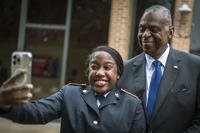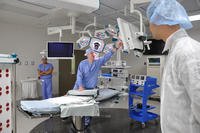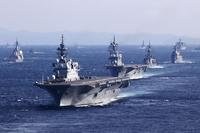
The Air Force Research Laboratory thinks they have a new biodetector in the form of a hand-held sensor that would collect and isolate samples, detect and identify agents, and tell the operator how serious of a threat exists. This sensor, developed by DOE's Pacific Northwest National Laboratory in cooperation with the Air Force, operates very similarly to the M1 Chemical Agent Monitor (CAM), in that it is intended to manually detect the relative level of contamination after an attack or following decontamination of a person or piece of equipment.
With the prototype system, the user sprays the suspected contaminated area, creating a sample that can be picked up by a swab. The sample material on the swab is suspended in liquid by rinsing it in a container. Once in a liquid form, the sample is injected into a special flow cell, the place where the assay occurs.
The flow cell is currently designed for one-time use. Since the cell is sealed, it can be decontaminated by immersion in a bleach solution and then safely transported to a forensic laboratory for further analysis where it can be opened to retrieve the sample material.
A liquid crystal display, or LCD, provides a quantitative readout of the concentration of targeted material present, and a set of red, yellow, and green light emitting diodes provides an easily interpreted reading of the threat level. For instance, "no threat" is green, a barely detectable to medium level of an agent is one or two yellow dots, and a high detection level is red.
Sounds great! When can we buy a dozen? Well there are a few hurdles to be passed yet. Traditionally, the National Labs have worked in the basic research area, which means while they have a proof of principle here, the device will require several months, perhaps years, until it gets to the point that it is a ruggedized and fully tested and accepted military item. In the usual course of events, this item would transition to the DOD Chemical-Biological Defense Program and continue its maturation.
The usual challenges in biodetection focus on the reliability and timeliness of detection, especially at low levels of biological warfare agents. Traditional air samplers take 15-30 minutes to detect and identify large samples of agent. Smaller polymerase chain reaction diagnosis systems (which appears to be the basis for this sensor) can take up to an hour, and usually require very clean samples (free from environmental interferrents). Since many biological warfare agents can cause illnesses with such small concentrations and the possibility of contagion is high (particularly with viruses), there's always been a very real challenge in achieving high reliability and high sensitivity in small, hand-held detectors. So don't send in your orders quite yet.
-- Armchair Generalist








